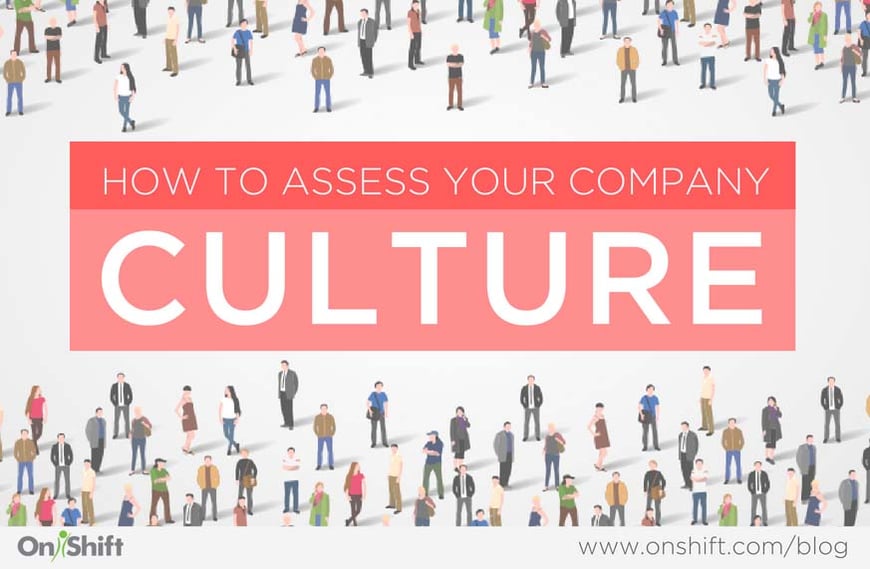July 24, 2018 | Peter Corless
July 24, 2018 | Peter Corless
 KEY TAKEAWAYS:
KEY TAKEAWAYS:In 2016, for the fifth consecutive year, the overall turnover rate in the healthcare and social assistance sector rose, according to the Bureau of Labor Statistics. Turnover reached nearly 32% annually, with specifically senior care organizations reporting turnover rates of over 50%. This is a troubling figure for an industry as high-stakes and high-touch as senior care.
That's why it's more important than ever for providers to cultivate an environment that both attracts and retains employees. And that starts with assessing the impact of their culture at the individual, team and organizational level.
Here are nine creative methods that can help senior care providers dive into the assessment process and build a winning culture to attract and retain top talent.
1. Align the organization's values and purpose with those of each employee. A senior care provider is only as strong as its employees. One way to engage employees beyond the paycheck is to align their career goals with organizational goals. Find out where employees want to go on their career path and see how the skills needed for that journey intersect with your company’s mission and values.
2. Examine your leadership. Employees who don’t have a positive relationship with their bosses are less likely to talk to them about their career goals. But the lack of connection between employees and employers has deeper consequences than that.
A Gallup poll in 2017 of more than one million U.S. workers showed that the top reason people quit their jobs is because of their boss or supervisor. To combat that, employers must build a connection with employees. Empathy is key. Employees want to know that employers care about them beyond the 9-to-5. Better manager-employee relationships can lead to improved retention rates.

3. Watch for emotions. As noted by human resources expert Susan M. Heathfield, emotions among employees is a sign of engagement.
“People do not get excited or upset about things that are unimportant to them,” Heathfield writes. “Examine conflicts closely, for the same reason.
Along these same lines, negative employee attitudes are huge indicator of engagement and management must make a concerted effort to correct negative ones.
4. Become an impartial observer of your culture. Long-term care and senior living employees have to enjoy working in teams. Providers who want to ensure team success must become impartial observers of their culture.
Key questions to ask when observing your culture, per Heathfield, include: “How do people interact with each other? How are conflicts resolved (and are there conflicts)? How do senior leaders interact with middle managers and employees? How do middle managers interact with reporting employees?”
5. Analyze how your culture influences teamwork. Alison Davis, founder and CEO of Davis & Company, recommends employers ask two questions to evaluate the cultural impact on teams: “How does culture shape your team managers’ goals and responsibilities? Do any values have unintended consequences on how employees work together?”
6. Use data to track culture strength. Culture strength might seem intangible, but it can be measured. Shawn Overcast, partner at Gotham Culture, says that companies can look at these metrics to see where they're at:
7. Participate in a culture walk. A strong and winning culture manifests itself physically. Its makeup is seen on the walls, in the hallways, in the break room and even in the faces of employees. When senior care leaders are walking through their buildings, here are a few valuable signs they should look for that indicate a strong culture:
8. Look at incentive programs (or lack thereof). Senior care providers are looking hard for ways to attract frontline, hourly employees — an incentive program might hold the key. In 2015, a study from U.K.-based recruiting firm Genesis Associates showed that 85% of employees felt more motivated to work when incentives outside of the employee’s contractual compensation were attached to performance.
These incentives have two key benefits for senior care employers. First is the obvious: an incentive or employee rewards program can improve worker outcomes. The Genesis study used three different incentive programs of different lengths, with the medium-length incentive increasing profits by £25,000 a week, or about $33,000.
The second is the personalization: a company can tailor incentives to the actual likes and dislikes of individual employees. That way, along with the incentive, the employee knows that the company cares about them on a personal level.
9. Hire culture “adds,” not culture “fits.” Successful companies know that assessing culture is an ongoing process, because culture changes with each hire and departure. The best organizations, therefore, do not merely look to add talent based on whether a person is a “culture fit.” They look for talent that enhances and grows the culture already in place.
To do that, company leaders must know what the culture is in the first place. Ongoing culture assessment, therefore, is crucial for building the senior care company that will work not just today, but tomorrow.
Sources:
https://www.bls.gov/news.release/archives/jolts_03162017.pdf
https://erickson.umbc.edu/files/2018/02/Argentum-Senior-Living-Labor-Workforce-Trends-2018.pdf
https://www.hrdive.com/news/managing-and-measuring-workplace-culture/513998/
https://www.inc.com/alison-davis/these-15-questions-will-assess-your-companys-culture-and-help-you-decide-how-to-improve-it.html
https://www.linkedin.com/pulse/employees-dont-leave-companies-managers-brigette-hyacinth/
https://www.thebalancecareers.com/how-to-understand-your-current-culture-1918811
https://blog.cultureamp.com/blog/how-the-best-organizations-measure-culture
http://www.greenhouse.io/blog/goodbye-culture-fit-hello-culture-add
Subscribe to the OnShift Blog
Recent Posts
Categories
About Peter Corless
Peter Corless is Executive Vice President of Enterprise Development for OnShift. Peter is a recognized HR leader in post-acute care and is well-known for his achievements at some of the country’s largest post-acute care organizations, including Kindred Healthcare and Genesis HealthCare. As an experienced, chief administrative and human resources officer within these organizations, he developed strategies that reduced turnover, improved recruiting and hiring strategies, and reduced labor costs.
See for yourself why thousands of providers rely on OnShift’s innovative software for recruitment, hiring, workforce management, pay and engagement. Request your personalized demo today.
